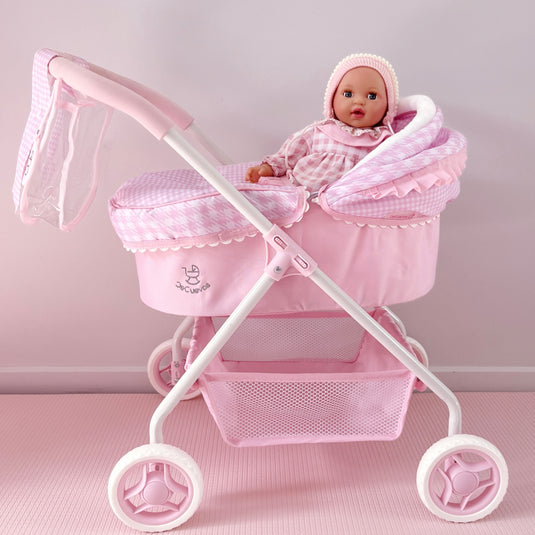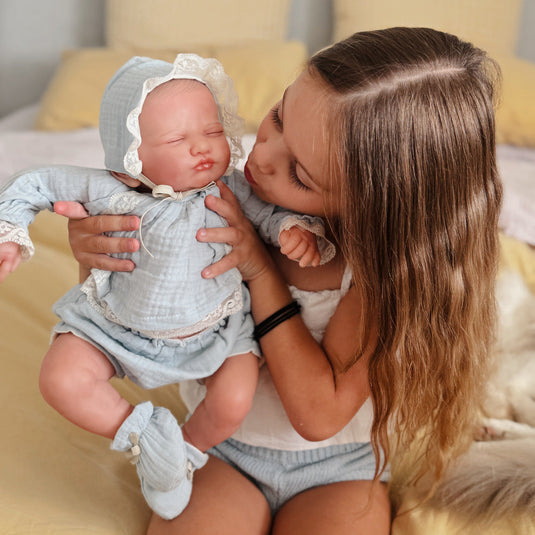Examine This Report on Dolls And Accessories
Examine This Report on Dolls And Accessories
Blog Article
Dolls And Accessories Can Be Fun For Anyone
Table of ContentsThe 5-Second Trick For Dolls And AccessoriesExcitement About Dolls And AccessoriesNot known Incorrect Statements About Dolls And Accessories Not known Details About Dolls And Accessories Dolls And Accessories for DummiesThe Ultimate Guide To Dolls And AccessoriesMore About Dolls And Accessories
When dolls are consisted of in group play, children practice waiting, sharing, and paying attention to others' ideas. Whether they're making believe to be a moms and dad, brother or sister, or buddy, children learn how relationships workhow to support others, address disputes, and take care of another person. These very early role-play experiences come to be the groundwork for healthy relationships and connections later on in life.Duplicating calming regimens with a doll (feeding, shaking, placing to bed) can aid youngsters really feel tranquil and safe. Taking treatment of a doll can make a child really feel capable and certain.
Not known Details About Dolls And Accessories
When kids see dolls that reflect their race, heritage, and culture, it reinforces a favorable feeling of identity. It states, "You belong. Your story matters." Dolls also present youngsters to cultures outside their own, building considerate curiosity and compassion for others. This is where inclusive play can cause inclusive areas.
As Dr. Karyn Purvis, a leader in kid growth and trauma-informed treatment, as soon as claimed: This powerful quote highlights how play isn't just funit's exactly how kids discover ideal. The mind cables itself via rep. When a youngster is engaged, joyful, and psychologically linked to an activitylike doll playthe mind strengthens those links faster and extra meaningfully.
Fascination About Dolls And Accessories

Young boys need empathy, generosity, and creative imagination tooand doll play provides that. Yesdolls use something distinct. They motivate open-ended narration and emotional link in a manner couple of other playthings do. Dolls are frequently a child's first "friend," aiding them practice connections, develop communication skills, and really feel comforted. Kids establish their sense of self from a young age.
Dolls And Accessories for Dummies
With play. Via pride. Via dolls that matter. Thanks for joining us on this journey. Samantha Ong Samantha Ong is the owner of Joeydolls, a Canadian-based plaything brand name on a goal to celebrate Asian cultures via happy, inclusive play. Inspired by her very own experiences expanding up without social representation, Samantha designs dolls that help children really feel pleased with that they are while stimulating curiosity and empathy in others.
Playing with dolls urges youngsters to speak even more regarding others' ideas and emotions, a research has found. The study recommends that playing imaginary games with dolls might help youngsters create social skills, theory of mind and empathy.
The 30-Second Trick For Dolls And Accessories
They were likewise much more most likely to address the dolls in the 2nd individual, talking with them directly, whereas the personalities on the computer system screen they had a tendency to describe in the 3rd person. No difference was observed in between kids and women."Inner state language can suggest that a kid is thinking of other individuals's ideas and feelings while playing with dolls," claimed Gerson.
And that they see language use in this regard is great confirmation of the theory."Mardell included that the findings ought to apply to any kind of kind of role-play toy, rather than being certain to Barbies."Kid usually begin to show indications of inner anonymous state language around the age of four.
The Dolls And Accessories PDFs
"It comes to be crucial for making and sustaining friendships, and exactly how they gain from their educators, and moms and dads."The study also located that the children had boosted mind activity in the posterior superior temporal sulcus (pSTS) region when they spoke as though their dolls had ideas and feelings. The pSTS area is thought to be included in the advancement of social and psychological processing abilities.
Youth is not a static life stage; undoubtedly, the definition, definition and understanding of youth are all based on modification. By the 19th century one of one of the most extensive changes was the significance put on permitting youngsters to experience "the carefree pleasures" of youth via play tasks. Play was currently taken into consideration to be a crucial element of a great youth.
In order to fully comprehend the definition of play, one have to likewise understand the significance of the doll. However, dolls are far more than playthings developed to entertain girls. During the 19th century appropriate playtime activities were chosen to promote intellectual, physical or emotional growth. Dolls were particularly popular because they were assumed to cultivate and support feminine high qualities such as kindness, caring and concern.
Dolls And Accessories Can Be Fun For Everyone

It is just with archaeological examinations that scientists can intend to reveal and record the complete variety of playtime experiences. Narrating these experiences, and particularly the function of dolls, is vital for offering a more complete photo of childhood during the nineteenth century. Alarcn, Sara E - european dolls., "Kid's Play: The Duty of Dolls in 19th Century Childhood Years" (2007 )
Report this page